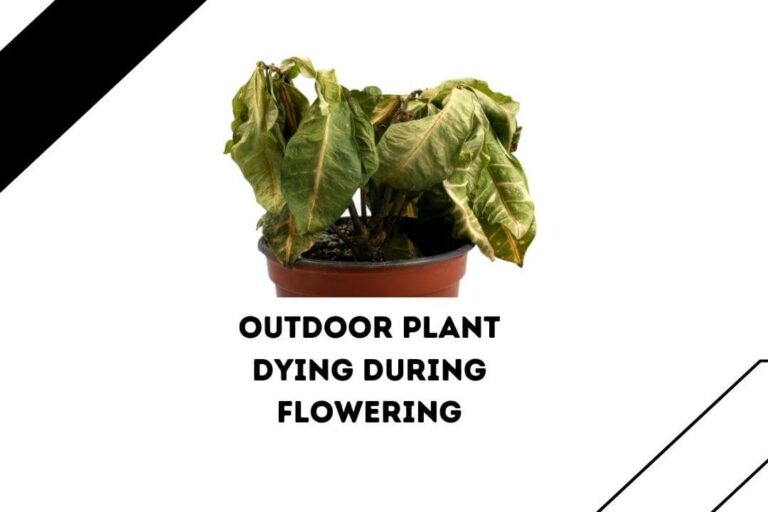White spots on a rosemary plant can be linked to several diseases, and each one is treated differently. The good news is that it is quite easy to tell them apart. Once you’ll learn how to do that, you’ll be able to cure your rosemary in no time, so let’s get right to it.
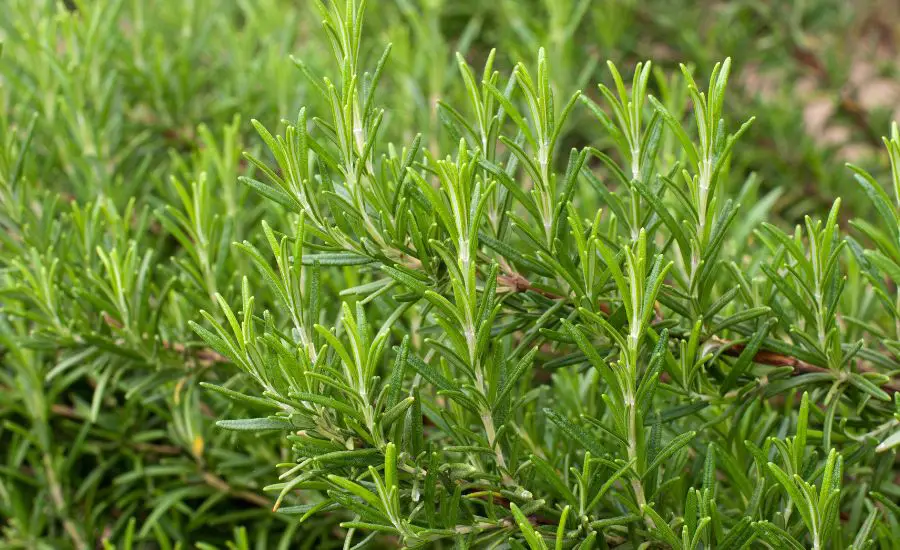
Powdery mildew
The number one cause of white spots on rosemary plants is powdery mildew fungus. It resembles flour-like dust on stems and the upper side of leaves. The color of the cover is mostly white but sometimes it can have a grayish hue.
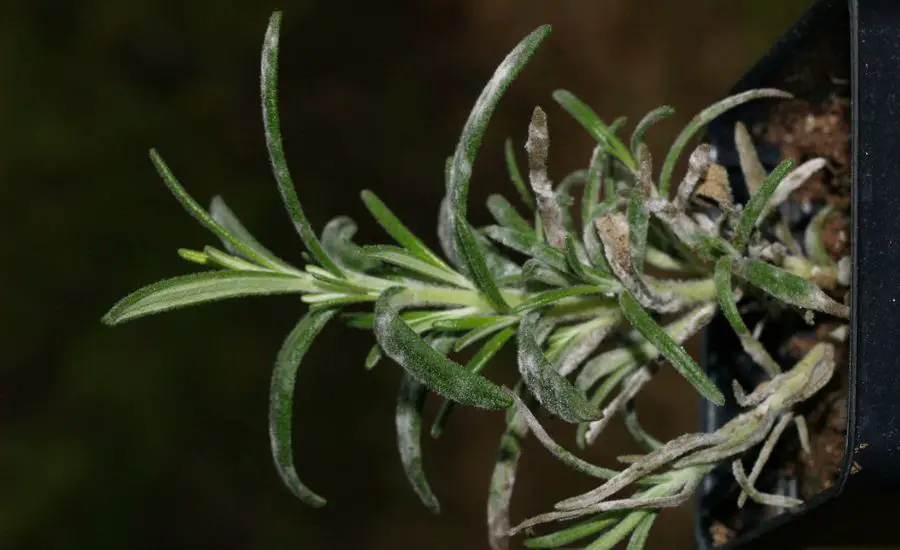
If this description fits your case, there is a ninety percent chance that your plant has caught powdery mildew pathogens.
At the early stages of the disease, you can start noticing that there are some small dusty spots on your plant here and there. However, after some time, these spots grow larger until they merge with each other. Eventually, large white patches of powdery mildew will cover the entire rosemary plant.
Surprisingly, powdery mildew is not always fatal for a plant.
Infected plants might last for quite a long time.
The thing is that powdery mildew itself does not harm rosemary plants the way you’d think. It doesn’t destroy the cells of rosemary plants, it doesn’t poison the plant with some kind of toxin, and it doesn’t suck all the juices out of it, or anything of that sort.
What happens is that the white coating of the mildew just prevents sunlight from hitting the leaf surfaces. As a result, photosynthesis stops in the affected leaves. If the white powdery coating covers enough leaves, the rosemary will essentially start starving.
It means that it won’t die right away but it will experience stunted growth. Besides, powdery mildew rosemary will have a harder time recovering after you harvest some leaves and stems. So there’ll be less rosemary for you to use in cooking.
I would also advise you not to eat rosemary with powdery mildew. While it is not harmful to most people, this fungus might cause an acute allergic reaction in some individuals. Furthermore, you will help spread the disease to other plants by harvesting the infected rosemary.
Every time you cut a mildew-covered leaf, clouds of fungal spores fly off it in all directions. They can land on other leaves or on another plant altogether and infect it.
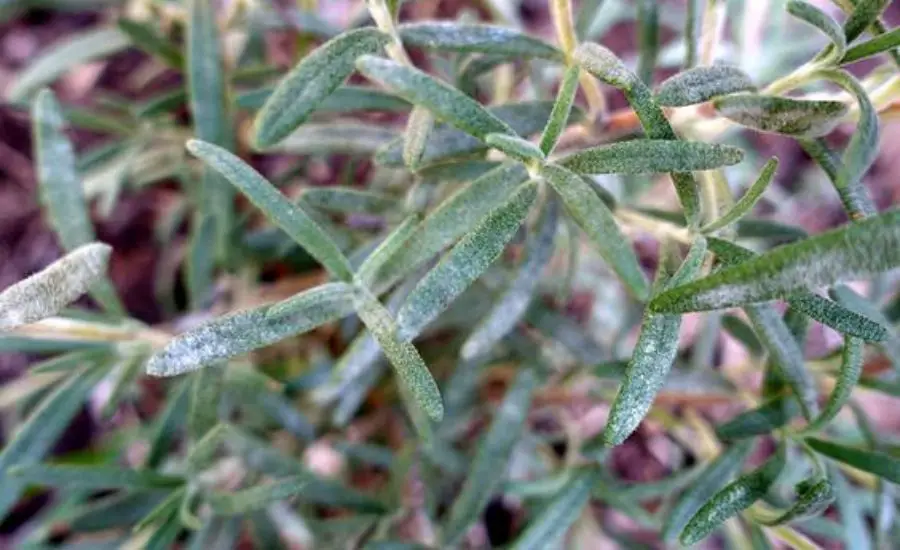
How to treat powdery mildew in rosemary plants
When treating powdery mildew on rosemary, time is of paramount importance. Once the disease starts spreading, it will be incredibly difficult to get rid of it. So start acting as soon as you notice the first little white spots on rosemary leaves.
Neem oil remedy is one of the strongest cures for mildew. Some gardeners claim that is even more effective than anti-fungal sprays.
Neem oil is a vegetable oil that is made of neem tree seeds. You can easily find and order a bottle online. There are both neem oil concentrates and ready-to-use solutions. The solutions generally come in a spray bottle.
Keep in mind that you shouldn’t apply neem oil concentrate on rosemary leaves. You’ll need to prepare a neem oil spray first. Making the spray is pretty easy, just follow the directions on the bottle.
Once the solution is ready, spray all rosemary leaves generously. It is important that you treat the entire plant, not just the affected leaves. Some leaves may seem healthy but the chances are that they’re also covered with tiny fungal spores which will grow into adult mildew with time.
As I said, this remedy is quite effective. One treatment is usually enough. However, the final result might vary depending on the concentration you use and the stage of the disease. So you might need to treat rosemary plants a couple more times if the mildew has spread far.
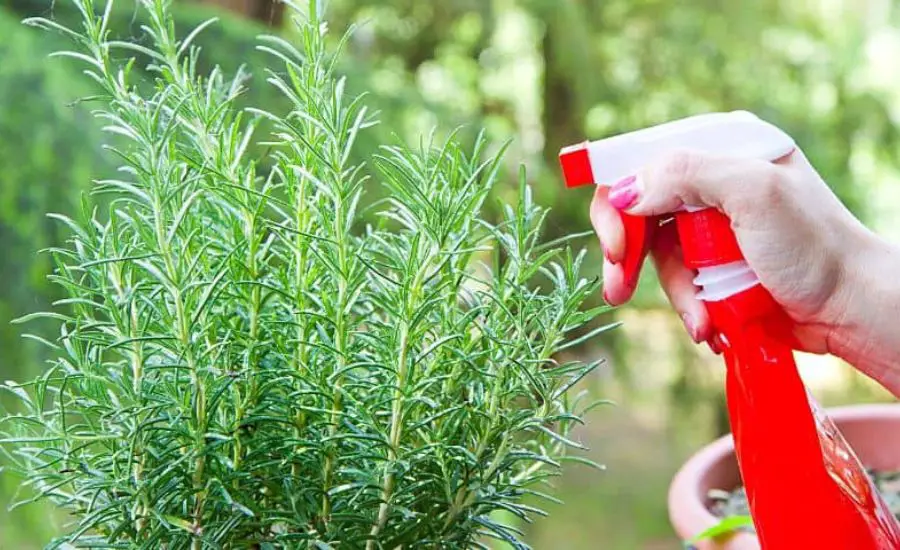
Alternative methods
You can also try some DIY remedies. Keep in mind though that they might not be as effective as the oil of neem tree or fungicides.
Moreover, you have to get all the proportions right when making the solutions. If you make them too strong, it might harm the plant.
However, making the solution too weak is even more dangerous, since in this case, you will be basically spraying rosemary with water. The water will wash powdery mildew spores off of the rosemary leaves and carry them into the soil or on other plants.
Baking soda
If the oil is not available for whatever reason, you can use regular baking soda. Prepare the baking soda solution by mixing one tablespoon of soda into a cup of warm water. Keep stirring until the baking soda is completely dissolved.
After that, pour the mixture into a spray bottle and treat the entire plant.

Compost tea solution
Another common remedy is compost tea solution. To prepare the solution, mix five parts water with one part aged compost. Now put the bottle with the mixture in a dark place and let it sit there for about two weeks.
Once this time has passed, stir the solution and strain it. It should have the color of brewed tea.
If it’s too dark, more like coffee, add more water to it.
Since you need up to two weeks to prepare this remedy, it is mostly used as a preventative measure. As I said, when treating powdery mildew on rosemary, time is significant. So you cannot really afford to wait for two weeks when those white spots first break out.
Spray rosemary leaves with the compost solution every other week throughout the season.

Preventing powdery mildew
Just like with many other ailments, it is easier to prevent powdery mildew than to cure plants that are already infected.
Powdery mildew is a type of fungus, and pretty much all fungi need two things to grow: darkness and humidity. That’s why, to prevent powdery mildew, you should always plant rosemary in a well-lit area. If we’re talking about indoor plants, place the pots on window sills.
Don’t put too many pots on one sill, though. Otherwise, there will be no proper air circulation between the plants. Without air circulation, moisture will not evaporate from the soil and rosemary leaves. And as we all know, a humid environment is exactly what fungi need.
The same rules apply for growing rosemary outdoors, with one important amendment: don’t plant the rosemary in direct sunlight. It should have at least a couple of hours of shadow throughout the day.
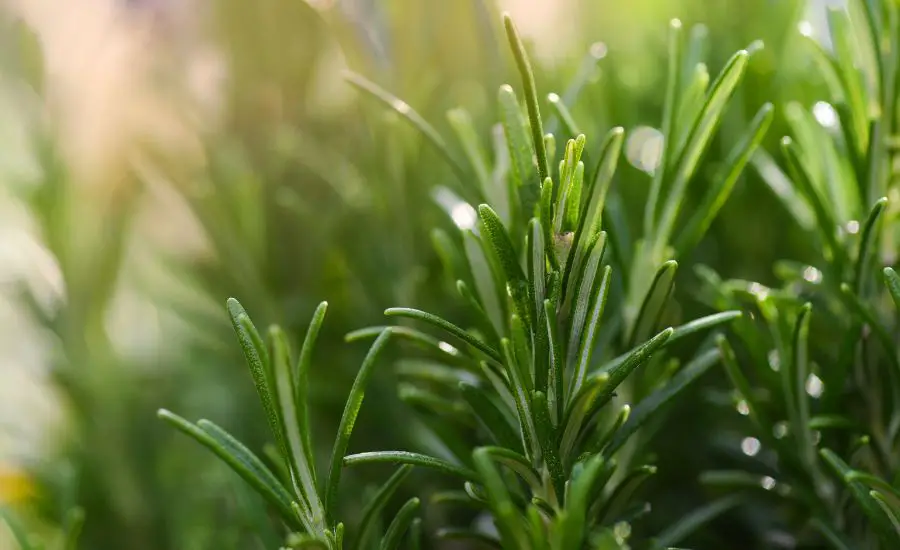
Other diseases
While powdery mildew on rosemary is the most frequent cause of white coating and spots, it is not the only one.
Sometimes your rosemary plant might become a home for parasite bugs like aphids and spider mites.
Inspect the plant, paying closer attention to the underside of the affected leaves.
You should be able to see the spider mites there, even though they are really small. They look like tiny greenish, or white, or black dots. Spraying rosemary with insecticidal soap should help you get rid of these creatures.
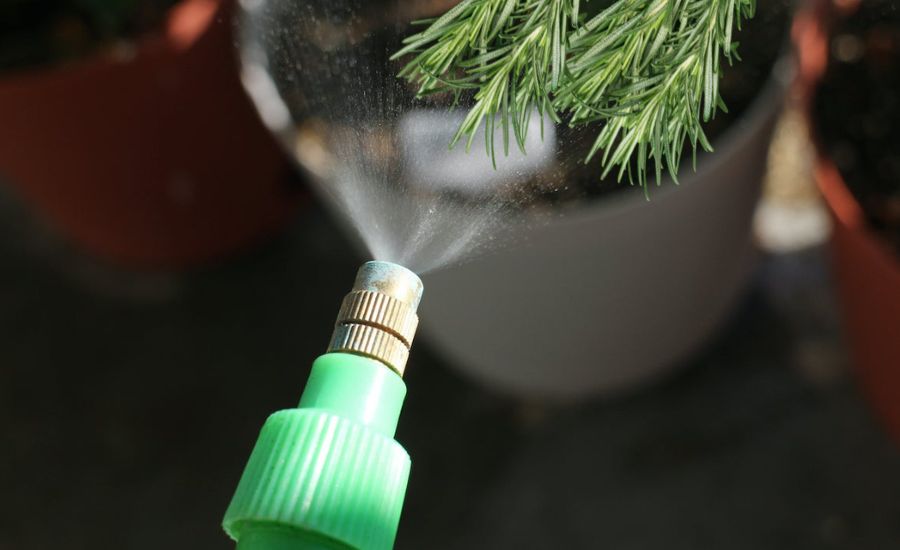
Conclusion
In most cases, white spots on rosemary are caused by a fungus called powdery mildew. The best way to get rid of the disease is to spray the plant with a neem tree oil solution. At the same time, it’s always better to prevent mildew by planting your rosemary in a dry, sun-lit area.
FAQ
How Do You Get Rid Of White Fungus On Rosemary?
The best solution would be spraying powdery mildew on rosemary with a neem oil mixture. There’s also a wide variety of other antifungal remedies online.
In theory, you can also treat powdery mildew with home remedies like baking soda mixture or compost tea solution but these will not be one hundred percent effective.
Can You Eat Rosemary That Has Powdery Mildew?
I would not recommend you eat an infected plant. Rosemary powdery mildew is not poisonous per se but it can cause serious allergic reactions in some people. Besides, powdery mildew affects the flavor of the plant. So you may ruin your dish by adding rosemary with powdery mildew in it.
What Is The White Milky Substance On My Rosemary Plant?
Several common rosemary plant diseases fit this description. Most often, the milky substance that appears on leaf surfaces is an indication of a fungal disease called powdery mildew.
Besides that, white spots on rosemary can be caused by tiny bugs: spider mites or aphids.
Finally, some parts of rosemary leaves can turn white or yellow because of root rot.
What Are The Signs Of Root Rot In Rosemary?
It is quite easy to determine if your rosemary plants have root rot. A plant affected by this disease appears sickly and wilted. It also starts suffering stunted growth. There are hardly any new shoots or leaves, and the old foliage turns yellow or falls off.





